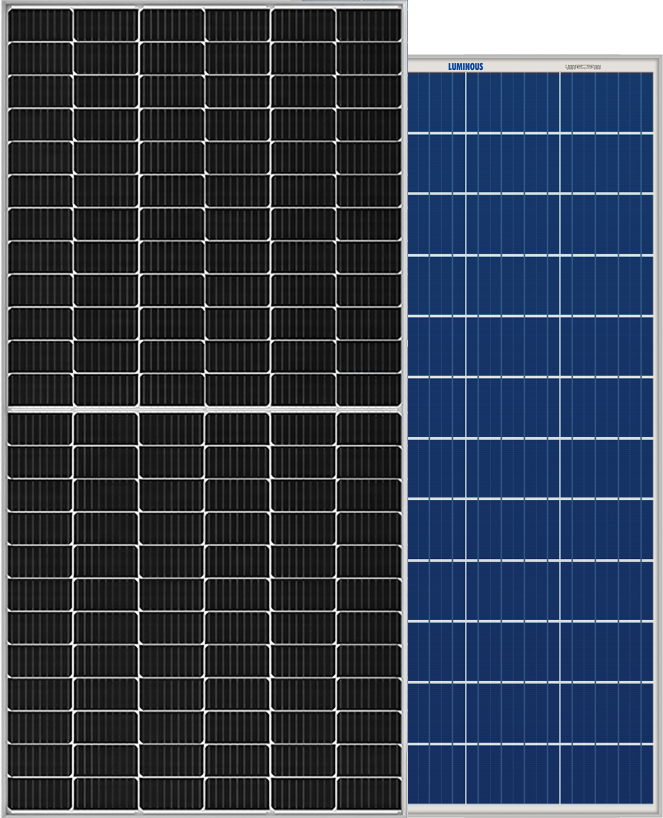If you put a lot of money into installing your solar energy system, it is reasonable to expect it to give you more power. Ultimately, everyone seeks significant investment returns. But it is well known that the most efficient silicon cells made for sale have an efficiency of 20%. So, is there anything you can do to have high efficiency solar panels?
This blog will give a clear explanation of what high efficiency solar panels mean and how to get more solar panel capacity.
What is Solar Efficiency?
The majority of the light that strikes the panels is reflected. Only a tiny fraction is converted into usable electricity to operate your appliances. The quantity of sunshine that your solar panels can convert into useful energy is called solar efficiency. High efficiency solar panels do well in a number of ways, such as temperature, direction, shadow, and type of cell.
Ways to Improve Solar Panel Capacity
The best type of solar panel providing high efficiency can perform at its best only if you consider some of the additional measures contributing in maintaining a high efficiency solar panels system.
1. Invest in Quality Panels
Sounds self-evident, right? You would be surprised by how many people choose cheap solar panels with poor performance. Solar panel capacity is dependent on the type of photovoltaic cells and the technology that is used in the solar modules.
In addition, if you have the financial resources, you can choose panels with Mono PERC half-cut cells that really can absorb sunlight from both sides. So, if you want to be more efficient and generate more power, you can’t use low-quality products.
The primary reason why people opt for low-quality products is that they believe that good-quality solar panels are higher on the price scale. However, our great range of both polycrystalline and Mono PERC half-cut solar panels are top-notch, along with being pocket friendly. These BIS-certified solar panels provide longevity, efficiency, embodied energy, and much more. Select high-efficiency solar panels for your home and move towards a sustainable future.

2. Opt for Superior Technology
Researchers are always trying to develop high efficiency solar panels that work better. Solar cell innovations, including design and engineering, have begun to emerge in the market.
While it would be impractical to evaluate all of these, these are a few possibilities to keep in mind when choosing high efficiency solar panels.
- Half-Cut Cells: Solar panels utilize standard silicon cells that have been cut in half. It improves the module’s performance and durability.
- Multi Busbar Cell Technology: Panels are outfitted with a greater number of busbars (which convey DC power) to reduce the time required for DC power transmission and boost output.
- Mono-Perc Modules: In this technique, a passivated layer is placed on the module’s backside to increase light absorption and generation.
- Integrated Solar Roofs: This technology replaces conventional roofs with a continuous solar panel roof structure. Utilizing additional panels in the same area enhances energy production.
3. Select Reliable Installers
People put less thought into choosing an installer than they do into choosing a high efficiency solar panel system. However, installation is one of the most important aspects of a solar power plant.
A trained professional would know that the solar panel capacity would be increased if it was tilted so that it faced the true south. Also, they have to make sure there are no things in the way of the sun and that the wires are connected according to exact calculations to cut down on DC losses.
Also, if your roof has structural problems, a professional will be able to find them, show you where they are, and give you ideas for how to fix them.
4. Permit Air-Flow Gaps
Solar panels’ capacity to generate electricity is substantially impacted by overheating. This is because the temperature of the solar system has the opposite effect on how much energy a solar power system makes.
Remember that there is enough space between the solar panel and the roof when placing them on metal sheds or roofing materials that tend to heat up. It would enable air to circulate beneath the panels, stopping them from overheating.
5. Properly Clean the Panels
They do not necessitate frequent maintenance. What is required is a thorough cleaning of the glass frames every six months to a year. It will significantly enhance solar panels’ capacity to generate energy.
Typically, a decrease in production indicates the need for a cleaning session. On the modules, there may be dirt collected. Moreover, consider fitting water-clearing clamps for improved water drainage. It will keep water from collecting at the corners of the frame, which could affect solar panels’ capacity and how much power they make over time.
However, ensure that you do not clean whenever the temperature is high since this might cause microcracks in the modules, which can be detrimental.
6. Avoid Shadows
Solar panels need complete sun exposure. They perform less effectively in shady regions. Check often for shadows that might be obstructing the light throughout the day.
Before adding anything else to the roof, like water tanks or pergolas, it’s important to consider how much shade you might need and how it would affect the solar panel capacity.
Additionally, for optimal performance, consider panels with shading tolerance.
7. Schedule Preventive Examinations
Schedule preventative inspections quarterly for the optimal functioning of your solar system. Engineers would be able to verify that all modules and components are operating properly and discover any output anomalies that could otherwise go undetected.
Final Words
Now that you have understood different ways in which high efficiency solar panels enhance solar output, be careful to choose only the best-in-class brand. We at Luminous that provide the best type of solar panel and has the knowledge and resources to custom-engineer a fully optimized system for you and to keep that system running for decades.
Leave a Reply